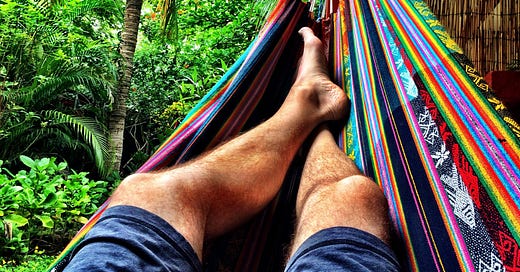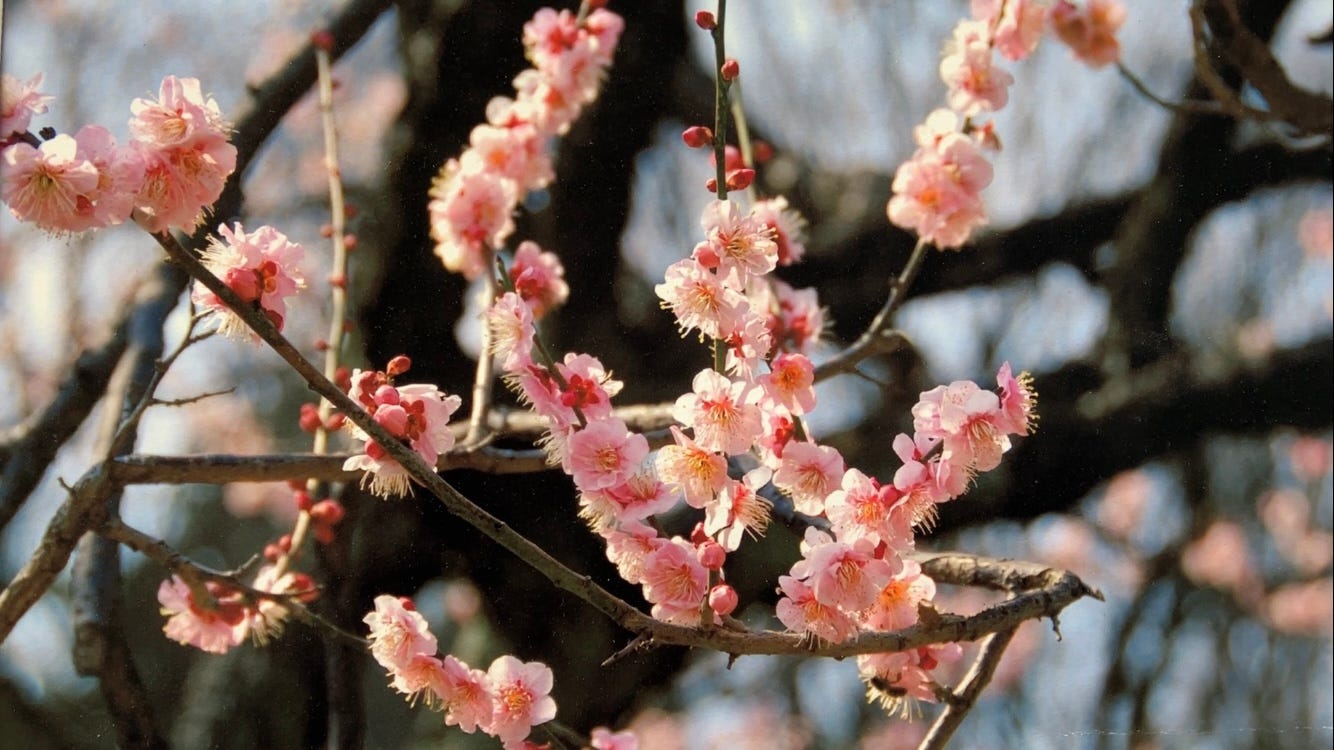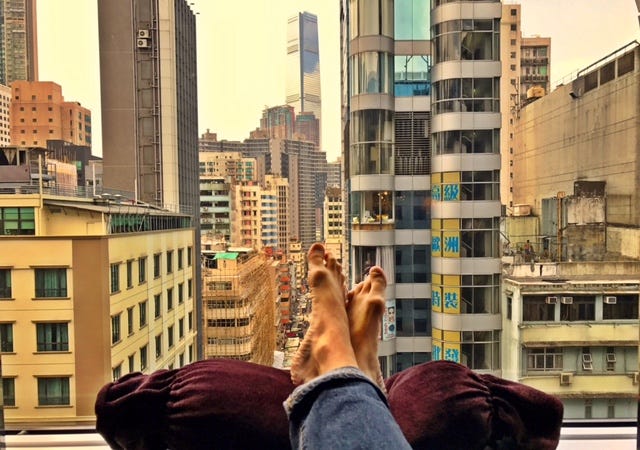"The price of anything is the amount of life you exchange for it."
-Henry David ThoreauFive years ago I was quietly living in a small 1100 square-foot home just outside my hometown of Austin, Texas. I was doing my utmost to live simply amidst the rapidly increasing consumer culture of America. Slow living was a pipe dream I envisioned somewhere off on the horizon.
Two years later I purged approximately 70% of my possessions and downsized to a 450 square-foot apartment in the center of Austin. This was my first step toward a much simpler way of life. I got my first taste of slow living on my first solo adventure to Costa Rica where I spent 8 days immersing myself in the pura vida way of life along the Guanacaste Coast. I have often said that a week in Costa Rica is like a month anywhere else. That transformational experience would never leave me and so I returned to the U.S. renewed with a clear intention to slow living and a simple way of life. Attempting a slow and simple life in one of the fastest growing cities in modern America was much like swimming upstream against a raging current. Eventually, I found myself being carried downstream.
In 2019, I took another mindful leap toward this way of life I wanted to live into the greater unexplored world by moving to Kyoto, Japan for a year and fully immersing myself in Japanese culture. I further purged my possessions down to a handful of boxes. I serendipitously found a tiny Japanese house for rent on Craigslist just a couple of narrow cobblestone blocks away from Kyoto’s lush Imperial Gardens, the original ancient capital and center of all Japan. That year, I walked over 600 miles, covering every back alley and side street of Kyoto. I had taken another step in further simplifying my life and had even further reduced my budget while living the most epic and transformational year of my life in the ancient spiritual city, where I studied tea ceremony, Zen Meditation, Japanese calligraphy and painting, and was on a quest to discover the most delicious ramen in Kyoto.
In Kyoto, I once again tasted a year of slow living. I would wake early according to my natural rhythm and walk for miles exploring the ancient gardens and temples of the old city. I spent my days writing, painting, exploring this fascinating culture and learning new ways to cook and prepare my food. That year proved transformative and left me forever changed and my heart will always remain in Kyoto.
When I returned to the U.S. in 2020, I was met head on with the beginning of the pandemic and what would become the worst year in history for many of us in our lifetimes. I was no exception. For fifteen long months I spent my days tirelessly trying to plug myself back into the American way of doing things. Seeking meaningful work became my full-time job as well as searching for a very small and simple place to live in a city that had seen a 43% rise in housing prices in one year. I performed jobs such as raking leaves in a garden nursery, delivering food door to door, all just to try to bring in an income amidst the pandemic. This was where my 25 years of successful business background had landed me. It became abundantly clear that this was a recipe for living that would no longer work for me and the simple way of life I had now grown deeply accustomed to.
In an unexpected stroke of serendipity and good fortune, I was offered an opportunity to spend three months in Costa Rica managing eight Airbnb rentals for friends, once again along the beautiful Guanacaste coast during the quiet rainy season. This was the very same place where I had my first experience and taste of slow living and a more deliberate way of life. It was a beautiful season of simplicity and recovery after such a disorienting year in America. I had been once again released from my cage.
This was my step into the world of becoming a nomad. My path from then on would not return me to the stress and busyness of modern-day America. During my three months in Costa Rica, once again along the same coast as the seeds for slow living were planted within me some ten years ago, I settled in to the familiar and natural rhythm of this way of life.
From Costa Rica I made my way down to Boquete, Panama, where I spent six months living on a mountaintop among the coffee farms and indigenous Ngabe Bugle people. These simple and peaceful people became my friends and neighbors. There I was able to live equally slowly and inexpensively, waking to beautiful sunrise vistas each morning off my front porch on the mountain, walking down into town and everywhere else for my transportation and overall better health.
As I have lived a deliberate and slow life in each of these very different places…Kyoto, Japan, Costa Rica and Panama, the elements of a slow and simple way of life have magically emerged, much like a plant that is left alone to itself and slowly begins to make its way on its own growth. Certain elements that have emerged have presented themselves in each of these locations: an ability to live a sustainable and rich life on less than $1,000 per month, being surrounded by the beauty of nature and not surrounded by a modern city, the ability to walk wherever I need to go to easily have access to the food and supplies I need, an ability to support my life costs on less than 25 hours a week of remote work, the time to write, paint, create and enjoy life instead of being a slave to it. My journey has been long, it has be arduous, and not without the help and generosity of others. I wake up today and find myself in such a life.
At the time of this writing, I have now been in Central America for over a year and a half. I now write from a 300 square-foot casa on a mountaintop at the edge of a rainforest from the central valley town of Ciudad Colón. I am down to one bag of possessions, my most essential basics and a few books. These are my total possessions as I now move lightly through the world leaving very little footprint. There is something liberating and peaceful about knowing that wherever I land the space will be mostly empty when I arrive and I will leave it that way when I depart. So far, I don’t find myself missing anything amidst all of the experiences, stories and people I meet along the way.
I think back on my very first solo trip to Costa Rica, where I met Grace, the sweet elderly waitress at a nearby cafe. Each morning she took a bus for an hour at 6 in the morning to get to work. She would spend the day preparing and cleaning and serve guests for the equivalent of $20 US. Never in my life had I ever met a happier and more peaceful person with a smile that could have gotten her hired the travel ambassador for Costa Rica. She embodied the meaning of pura vida. It was her smile that I remember, one that I have never encountered on a person’s face at their job in America. I knew that was what I was ultimately seeking. As I now write these words from a mountaintop in Costa Rica, surrounded by trees and birds and wildlife, waterfall running off in the background, I think I have come as close as I may ever get to arriving.
The slow life is not for everyone, but it is within anyone’s grasp. In the modern world we have been given an entirely different recipe for happiness and success. I followed that recipe diligently for 25 years of my adult life. It didn’t end up giving me what my soul most hungered for.
Field Notes
This week begins the long anticipated cherry blossom season in Japan.
Cherry blossoms “Sakura” さくら in Japan are a symbolic flower of the spring, following winter, a time of renewal and the fleeting nature of life. Their life is very short. After their beauty peaks around two weeks, the blossoms start to fall. Widely celebrated in Japanese literature, poetry, and art, sakura carry layered meanings. Because they bloom briefly, the blossoms are often seen as a metaphor for the ephemeral beauty of living.
“We cherish things, Japan has always known, precisely because they cannot last; it’s their frailty that adds sweetness to their beauty.”
-Pico Iyer
In Japan, there is a holiday dedicated to the flowering of Sakura Hanami. Once the official opening ceremony of the holiday takes place, everyone goes to the parks to admire the blossoming sakura.
Sakura has long been a symbol of tenderness and love and the fleeting beauty of impermanence.
the one whose beauty I treasure the most Brittle and dark her love no one knows As if under a spell that does not go She makes an appearance every year Sometimes early or later This is the time I hold dear All who see her are halted in awe She is beautiful but not yet mine I don’t want her to ever leave I will love her until the end of time -Unknown
View from the Road
Mi casa in Ciudad Colón as seen from Google Earth
the world is speeding up yet I am slowing down, people are doing more talking I am returning to silence, the world is seeking more entertainment I am seeking more solitude, the world is striving after things I am hungry for adventure and experience many are seeking more I am content with enough, the world is seeking to build more I am inspired to create more, the world is seeking something “out there” I have discovered everything “in here” where is the world headed? I feel as though I have already arrived -Kirk Lee
Subscribe. Donate. Share the Journey.
Zen and Ink Journals represents hundreds of hours of writing over the past decade, sometimes from a train in remote China or a coffee shop in Kyoto, a hammock in Costa Rica or a simple cabin on a mountaintop in Boquete, Panama or Ciudad Colón.
On these pages, I share my observations of kindness and beauty from my adventures in the world and invite you to listen quietly for the call within you to explore the places that beckon your soul.
If you would like to become a regular subscriber, please consider foregoing the cost of one cup of coffee and a pastry each month ($8) and becoming a monthly subscriber.
If you would like to stop receiving emails from Zen and Ink Journals simply click the unsubscribe button at the bottom of this email.








